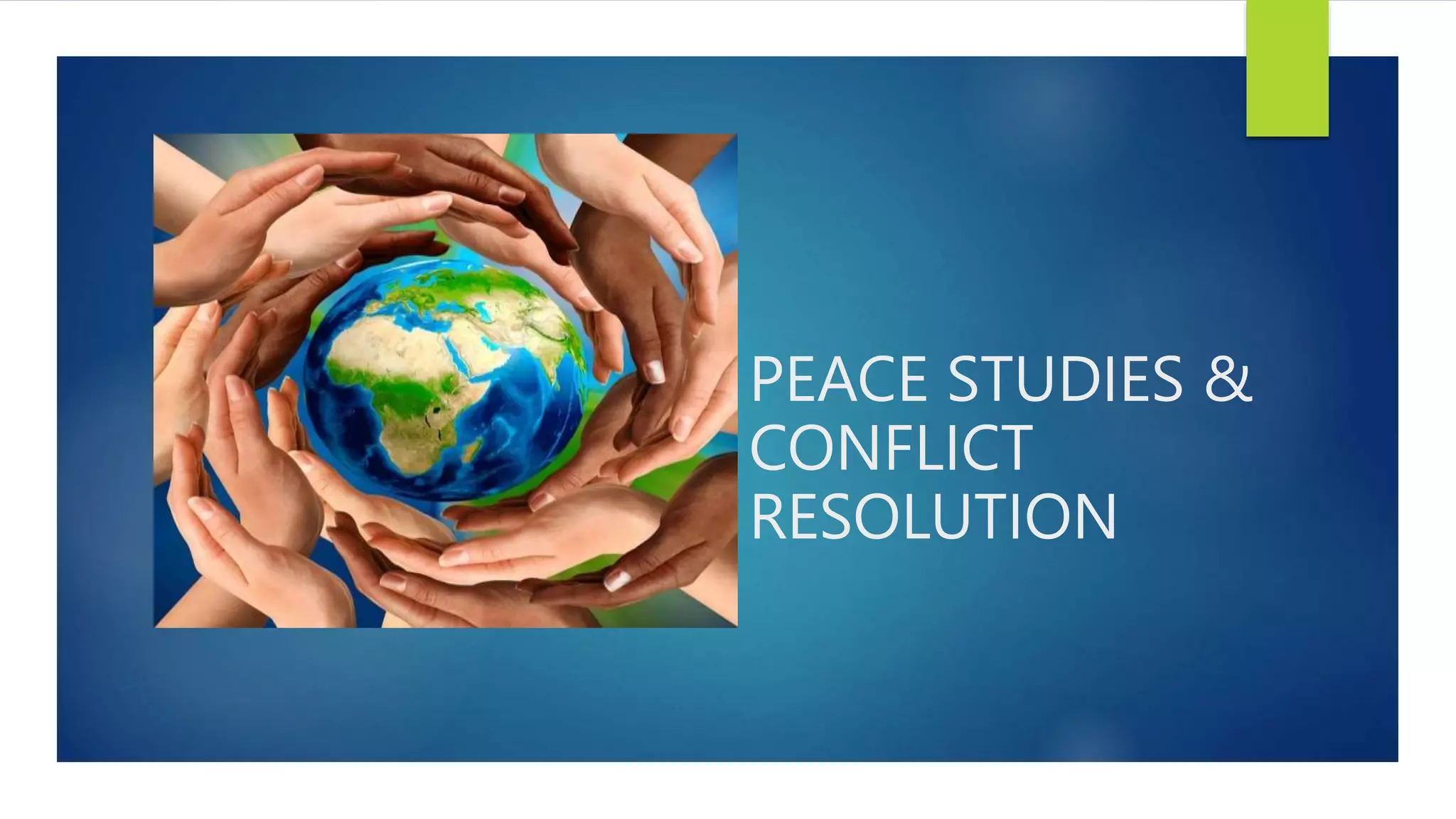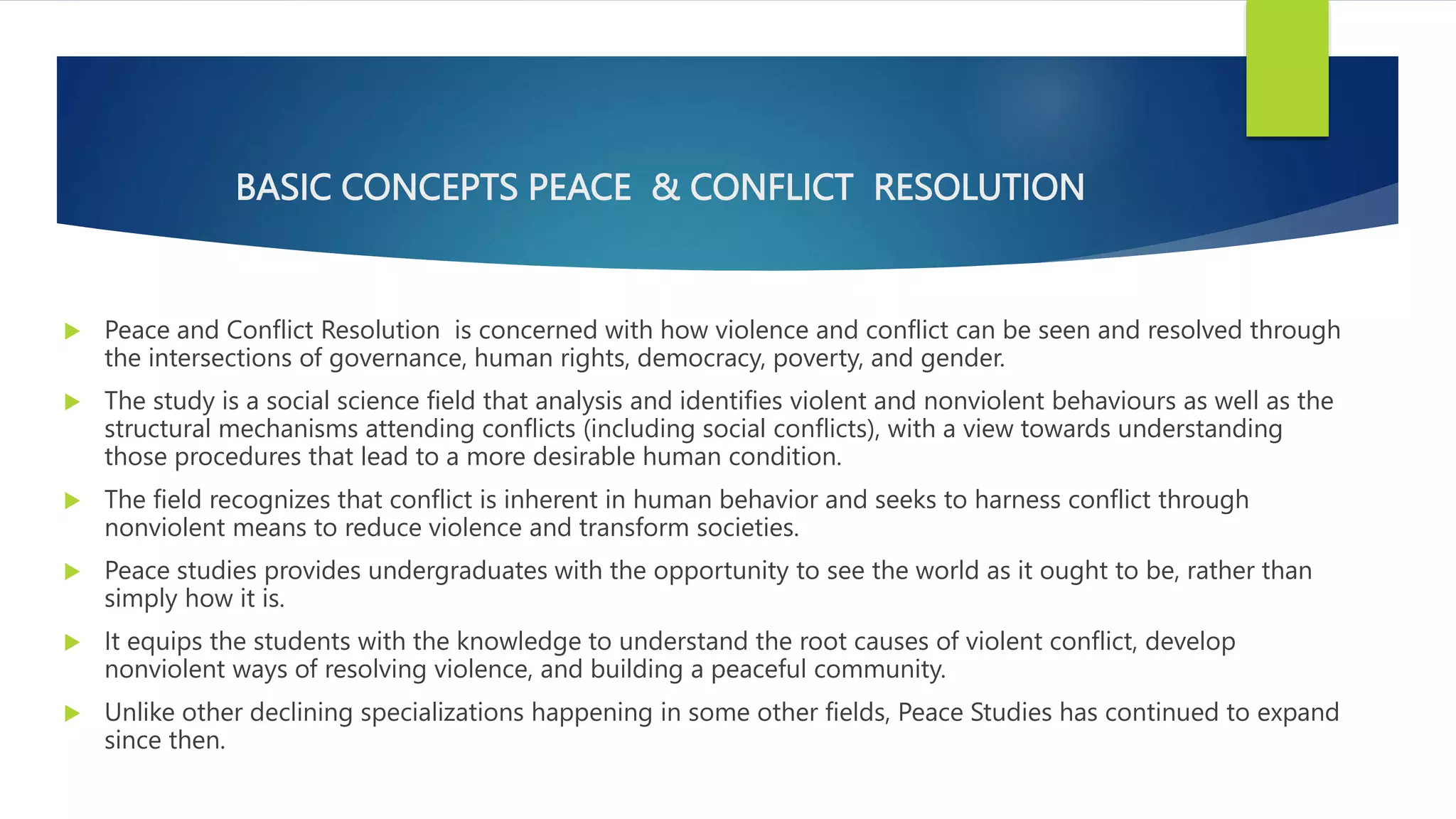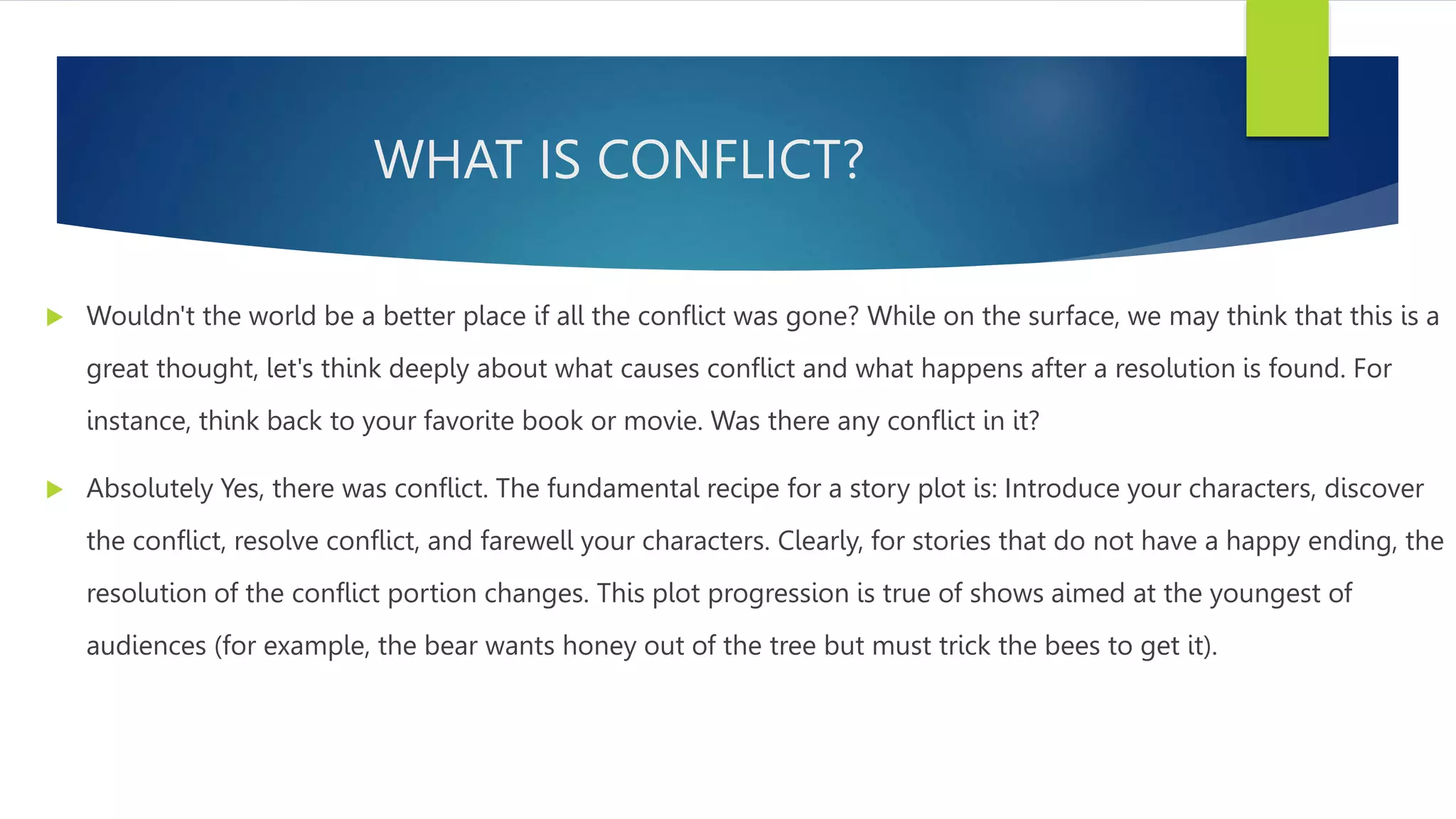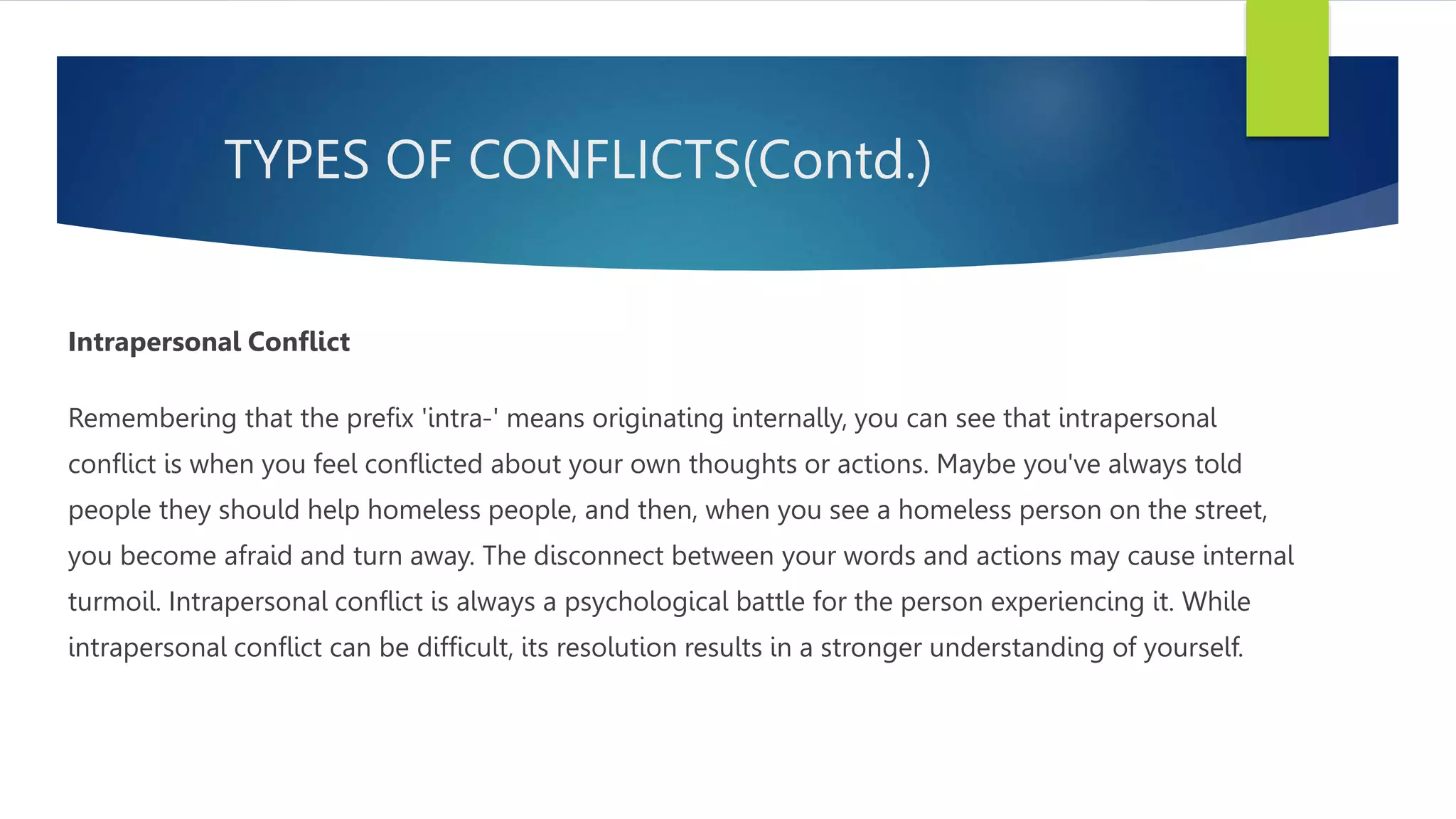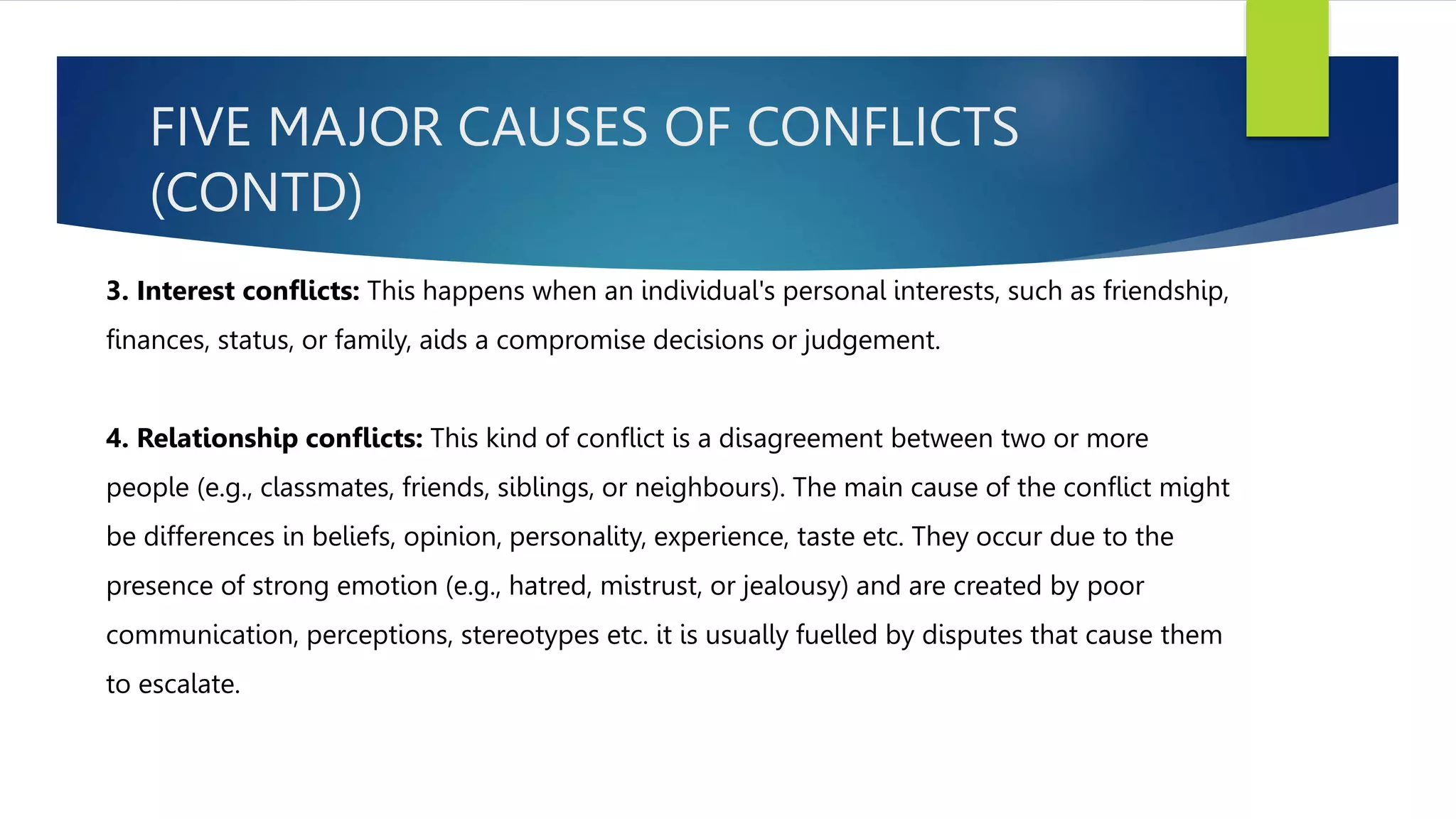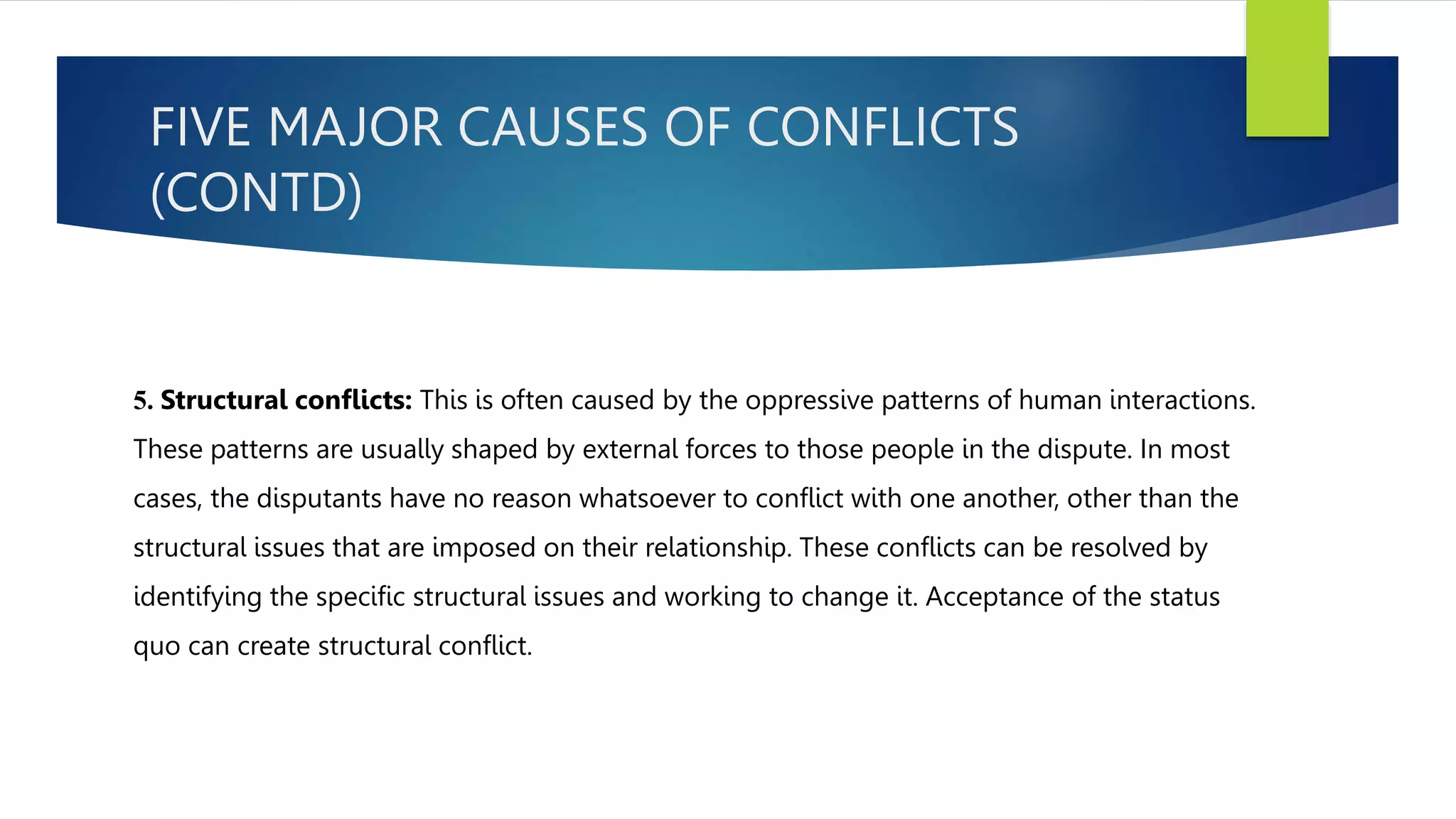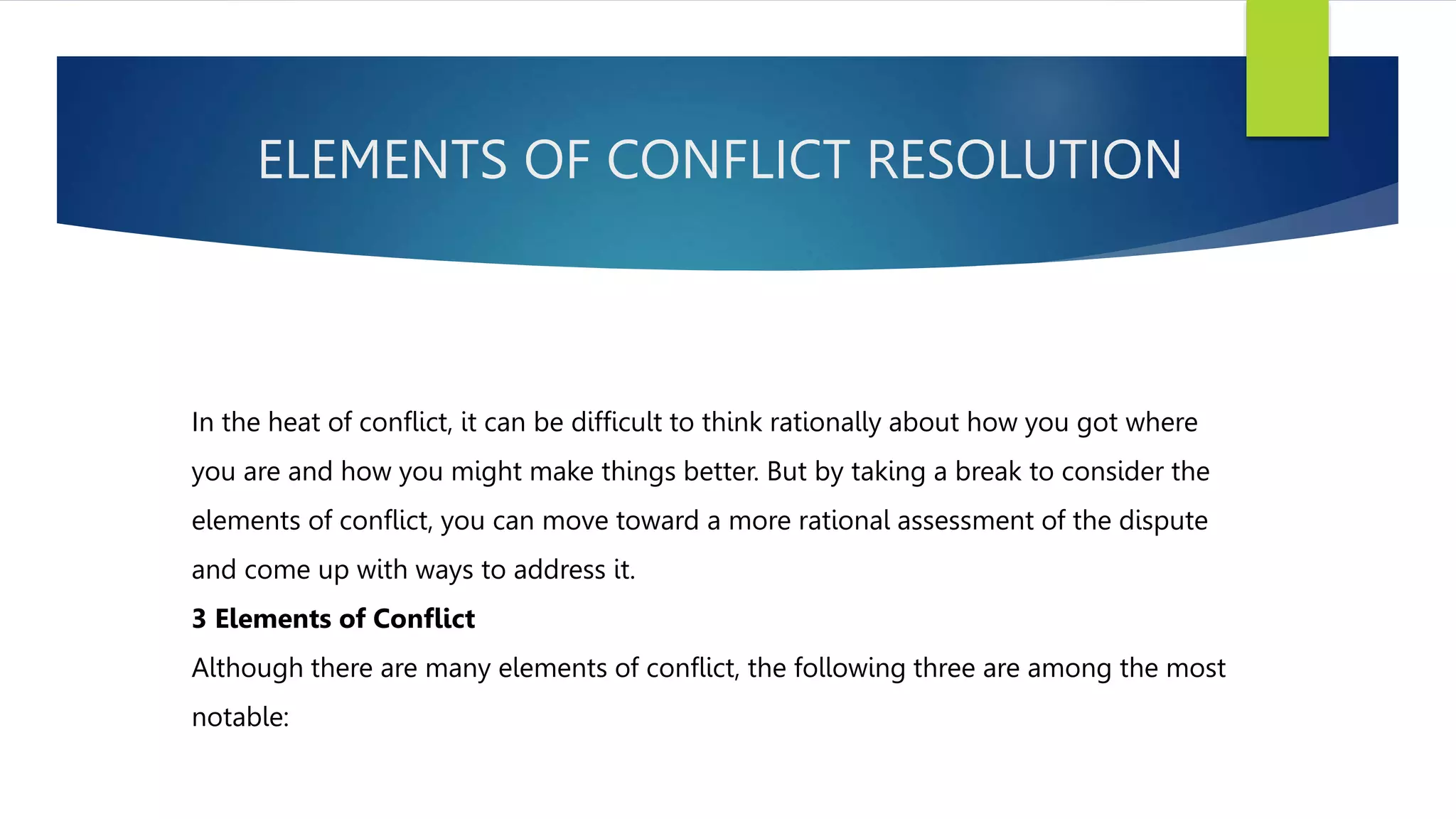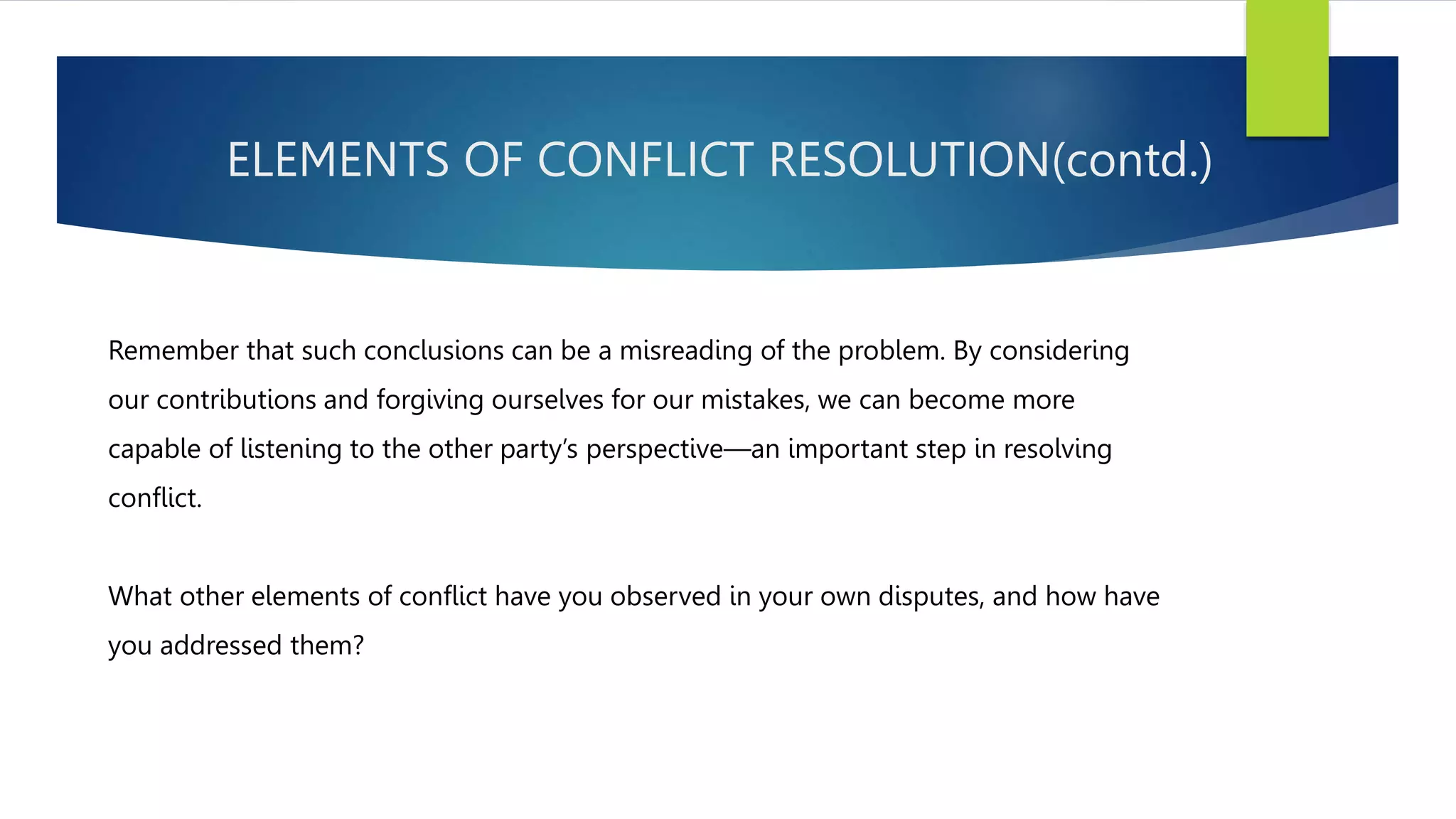This document discusses peace studies and conflict resolution. It begins with an introduction to peace studies, noting it is an interdisciplinary field that seeks to build sustainable peace through research and practice. It examines the root causes of violence, strategies to prevent and transform conflicts nonviolently, and approaches to promote structural change. The document then provides more details on basic concepts in peace and conflict resolution, including that conflict is inherent in human behavior and the field seeks to reduce violence and transform societies through nonviolent means. It also gives an overview of some of the major types and causes of conflicts as well as elements and processes of conflict resolution.
